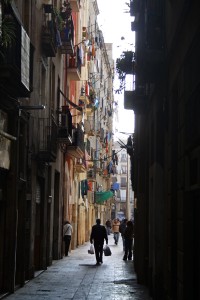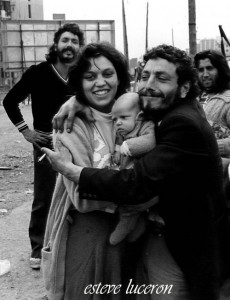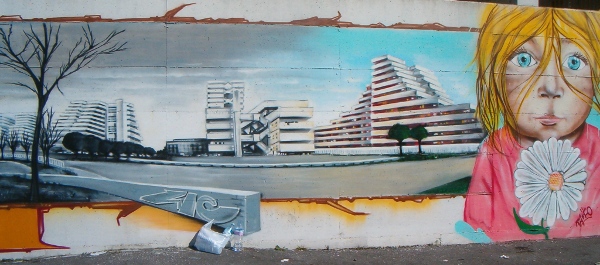
History and its distortions in the center of Barcelona
 To understand the recent urban and social transformations in Barcelona's Barrio Chino, historical center of the town (that now, after gentrification and demolitions, we have to call "Raval") often the attention goes towards the subproletarians living and smuggling in the neighborhood: "an underworld of immoral behaviour" (1943). But it would be more useful to study another kind of commerces, much darker and of greater scale, than those of the underworld. The catalan bourgeoisie had been trying to transform and demolish Barcelona's city center during more than a century: this project had to wait during the dictatorship, but in the eighties the old dream came back to life. "These 200 families that had been holding power during 150 years, invested in purchasing blocks of flats in central Barcelona, so they would make lots of money when these neighborhoods would have been demolished and rebuilt". Read Adolf Castaños' Memory and its distortions (inedited, 2010) in English (pending revision). (original Spanish)
To understand the recent urban and social transformations in Barcelona's Barrio Chino, historical center of the town (that now, after gentrification and demolitions, we have to call "Raval") often the attention goes towards the subproletarians living and smuggling in the neighborhood: "an underworld of immoral behaviour" (1943). But it would be more useful to study another kind of commerces, much darker and of greater scale, than those of the underworld. The catalan bourgeoisie had been trying to transform and demolish Barcelona's city center during more than a century: this project had to wait during the dictatorship, but in the eighties the old dream came back to life. "These 200 families that had been holding power during 150 years, invested in purchasing blocks of flats in central Barcelona, so they would make lots of money when these neighborhoods would have been demolished and rebuilt". Read Adolf Castaños' Memory and its distortions (inedited, 2010) in English (pending revision). (original Spanish)
- Photos (2008-2009) of neighbors under eviction in Calle Robadors. [Album1][Album2]
- Manuel Vázquez Montalbán "The ethnical cleansing of the high classes" in El País, 14/9/1993
- "1988-1991 Crisis of heroin and beginnings of the urbanistic war in the historical center" in Masala, november-december 2009.


